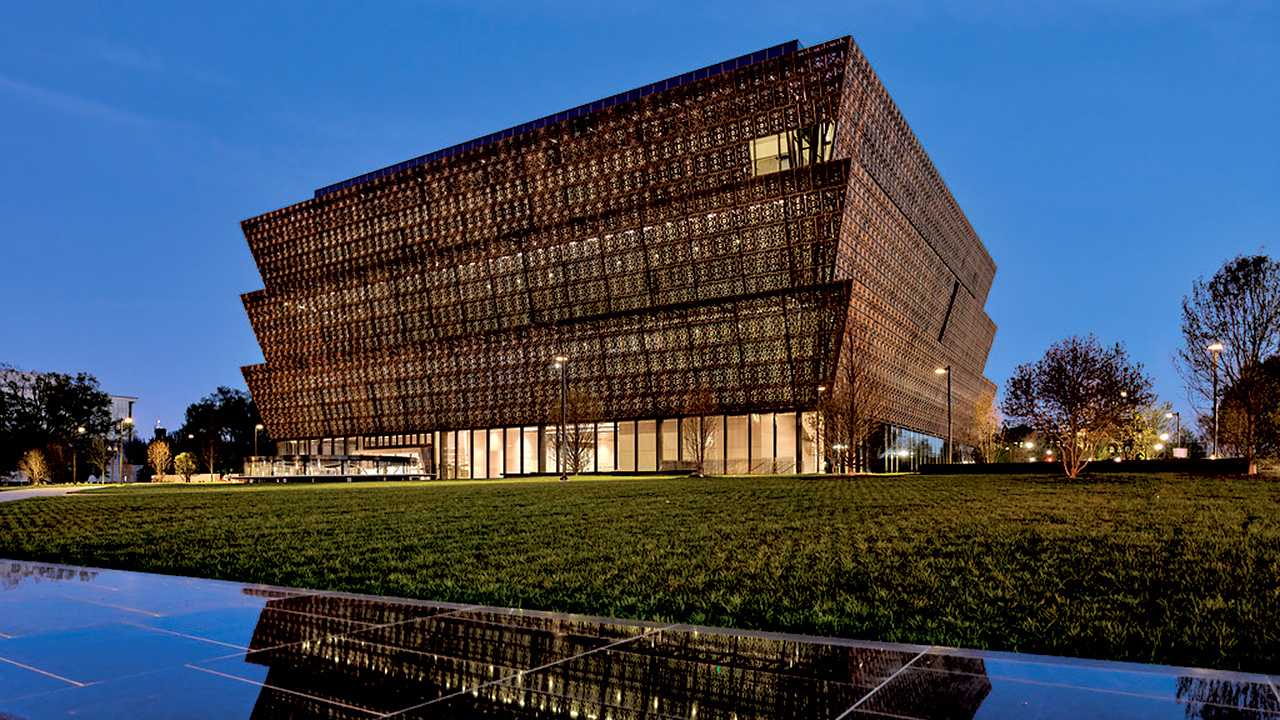
Symbolism of Design
The gardens at the National Museum of African American History and Culture are young and filled with hope and anticipation for the future. The landscape’s design serves to contextualize and relate the museum to the larger landscape on the iconic National Mall at the same time it provides a reflective space filled with deeply symbolic meaning and intent. The museum’s open, pastoral grounds; long, sweeping paths; and careful groupings of trees reference the nearby grounds of the Washington Monument and the White House while the site’s thematic plantings, reading groves, and water features provide a reflective space for Smithsonian visitors.
Members of the Seattle-based landscape architecture firm GGN designed the landscape. The firm, known for its symbolic landscapes, devised a landscape around three main themes symbolic of the African American experience: Hope and Optimism; Strength and Resiliency; and Spirituality. GGN based its plant selection on these themes when it chose large ornamental shade trees for their strong, muscular bark; smaller flowering trees for their early white blooms that inspire hope with the change of seasons from winter to spring; and a flower palette dominated by blues, whites, and purples to denote spirituality. This conceptual framework will guide future development of the museum’s landscape.
Plant selections echo the three landscape themes. White- and blue-blooming plants, including various Hydrangea species and Russian Sage (Perovskia atriplicifolia), were chosen because their colors reference spirituality. Blue is symbolic of protection and passage to a safe place. Strong native trees, such as Southern Live Oaks (Quercus virginiana) and American Beech (Fagus grandifolia) express the theme of resiliency. Early spring flowering ‘Yoshino’ Cherry Trees (Prunus x yeodensis), Star Magnolias (Magnolia stellata), and native Fringetrees (Chionanthus virginicus) signify hope and optimism for spring after the cold of winter.
Additional landscape elements add depth and complexity to the narrative. The “Oculus,” a water feature that is part of the Contemplative Court inside the museum, is lit from within and stands as a beacon in the landscape. This feature references lanterns held in the windows of “safe houses” that guided enslaved peoples north to freedom along the Underground Railroad. To the west of the Oculus, a reading grove created for small groups is used by educators and interpreters for gathering and reflection. The reading grove continues the theme of hope and optimism with the addition of benches designed to evoke “two clasping hands to hold each other and give each other strength.”
